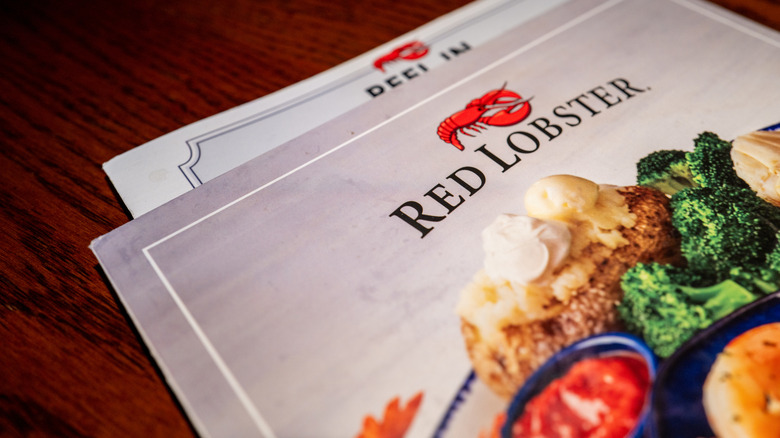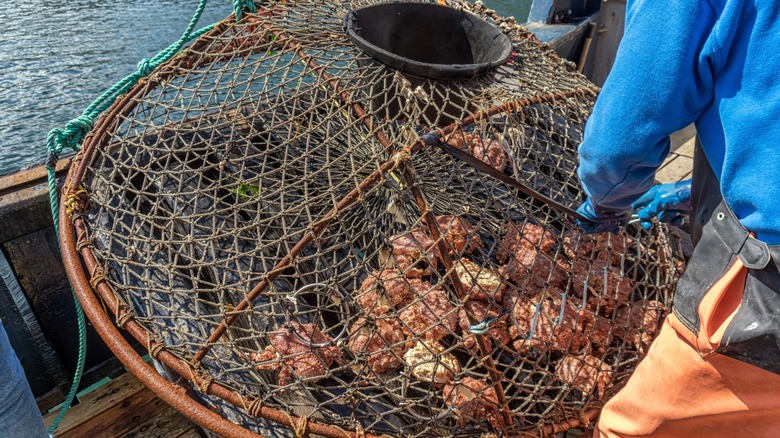The 2 Wild-Caught Seafoods You'll Find On Red Lobster's Menu
While Red Lobster may have seen better days, it's still recognized as one of the chain restaurants with the highest quality seafood. The company has always prided itself on sourcing high-quality products from reputable suppliers, whether they come in fresh or flash-frozen shortly after catching. The crab and shrimp, in particular, are excellent because they're wild-caught.
Red Lobster uses 100% wild-caught snow crab and Chilean crab for their dishes, and will occasionally offer other varieties as long as the conditions are right for responsible harvesting. For their main two varieties, the crabs are sourced from the Bering Sea, the North Atlantic Gulf, and the southeastern coast of Chile. Red Lobster works only with suppliers that make their catches using crab pots, which are known to be one of the most sustainable means of collecting crabs.
The shrimp at Red Lobster, on the other hand, is a mix of wild-caught and farm-raised. They're sourced from the waters in Southeast Asia, India, Ecuador, and Guyana. Red Lobster's wild-caught shrimp are supplied by local fisheries whenever possible, while their farm-raised shrimp come from suppliers with internationally recognized sustainability certifications. It's likely that Red Lobster's endless shrimp deal proved to be a little too successful precisely because of the quality of their seafood.
Why wild-caught usually means better quality
Red Lobster's wild-caught crabs and shrimp enjoy natural diets in their native habitats, which can have a profound effect on the quality of their meat. Shrimp, for instance, get their "shrimpy" flavor from bromophenols, which are naturally occurring chemical compounds found in the worms they eat in open waters. Farm-raised shrimp tend to have lower concentrations of bromophenols because it's more costly to include it in their daily feed, resulting in less flavorful meat.
Wild-caught seafood also tends to have fewer contaminants than farm-raised simply because they aren't kept in tight, controlled pens. While ethical fisheries do their best to maintain healthy living conditions for their livestock, the dense populations within these waters puts the seafood in closer proximity with each other's waste, among other things. This means that wild-caught fish are also less likely to have diseases than their farm-raised counterparts.
Instead of trying your luck with meals you're better off avoiding at Red Lobster, check out the dishes that feature the chain's wild-caught crab and shrimp. You can be assured of better quality seafood with items like the customizable Crab Your Way or Popcorn Shrimp. Pair it with Red Lobster's ever-popular Cheddar Bay Biscuits, and you're in for a satisfying time.

